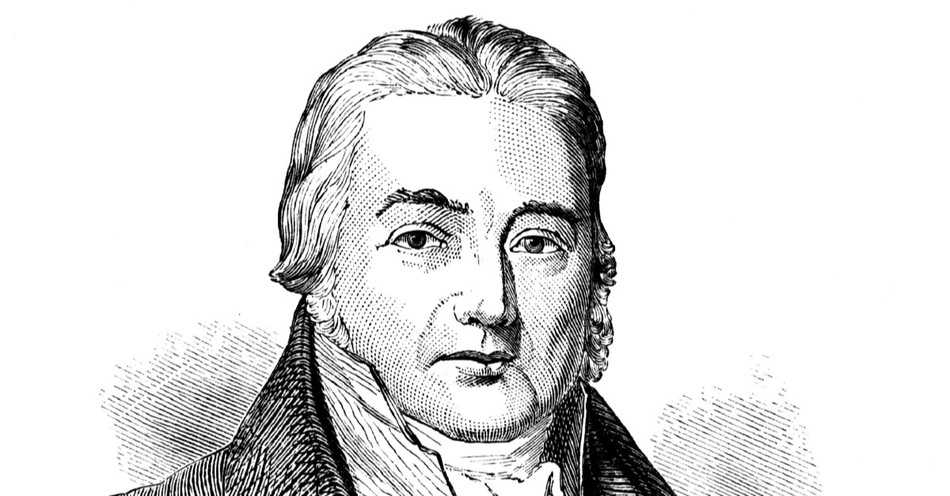Samuel Taylor Coleridge was one of the eighteenth century’s most popular poets. Why is he still highly regarded today in the twenty-first century?
How Did Coleridge Become a Poet?
Coleridge was born in England in 1772 to Anne and John Coleridge. His father, John, was a schoolmaster and vicar in The Church of England. Coleridge was raised in a household where education was taken seriously and therefore became a voracious reader of myths, legends, classics, poetry, and plays. Coleridge found solace in books as he experienced great alienation from people while growing up in the remote village of Ottery St. Mary in Devon.
At the age of eight, Coleridge suffered the loss of his father. After this loss, in 1791, Coleridge was educated at Christ’s Hospital grammar school in London. During his time at the grammar school, Coleridge became fluent in Greek, Latin, and Hebrew and found the writings of Geoffrey Chaucer, William Shakespeare, and John Milton incredibly inspiring. While studying at Cambridge Coleridge, he suffered financial difficulties and enlisted as a dragoon in the British Army’s cavalry. After his brothers provided help, Coleridge resumed his studies at Cambridge but left in 1793 without earning a degree because of outstanding debt.
Coleridge’s wide reading, friendship with poet William Wordsworth, and devotion to the written word made him a well-known figure worldwide. Coleridge’s first work to be published was his collection Poems on Various Subjects in 1796, which included his now iconic work, “The Eolian Harp.” Coleridge did not have much of a wide readership until “Lyrical Ballads,” co-written with Wordsworth, was published in 1798.
Coleridge’s works, such as “Christabel” and “The Rime of the Ancient Mariner,” are still studied, taught, and published in different poetry anthologies. Coleridge died in 1834. In 2022, Coleridge was honored with a statue unveiled at St. Mary’s Church in Devon, where he grew up. The Coleridge Memorial Trust conducted the ceremony.
How Does Christianity Inform Coleridge’s Poetry?
Coleridge understood how his Christian faith correlated with his vocation: there was no separation where his faith and gifts were mutually exclusive. Coleridge saw poetry as a gift from God to humankind and rejected the view that one should keep one’s faith separate from one's work compartmentalized. A good example of Coleridge’s understanding of poetry as a gift from God comes from “The Rime of the Ancient Mariner”:
“He prayeth best, who loveth best
All things both great and small;
For the dear God who loveth us,
He made and loveth all.”
Poetry uses simile, metaphor, and particular forms to convey important human emotions and timeless truths and to pose questions everyone asks themselves at some point.
Coleridge’s understanding of the power of story gave him the courage to use his poetry to explore his struggles with depression, doubt, and faith. Again, “The Rime of the Ancient Mariner” is a great example. Its narrative describes a mariner who kills an albatross out of ignorance, then experiences profound guilt. This guilt causes the mariner to repent and understand the unfathomable depths of God’s love. Though the poem has been interpreted in many different ways, scholar Malcolm Guite has pointed out that it can be interpreted as a Christian allegory of Coleridge’s own journey of faith. Coleridge’s poetry has brought enjoyment and encouragement to millions of people around the world.
How Did Coleridge Become a Theologian?
Coleridge’s love for poetry helped him to understand that God was the source of all goodness, beauty, and truth. This awareness gave him the desire to pursue a vocation as a theologian and a poet. Coleridge published his theological work Blessed Are Ye That Sow Beside All Waters in 1817 and published The Constitution of Church and State in 1830. These works of theology explore Coleridge’s views on scripture, nature, divine revelation, and the role of politics in the Christian life.
As a theologian, Coleridge was fascinated by the fact that Jesus of Nazareth told parables to communicate things about the kingdom of God to people in the vocabulary of the day. The Creator of time and space chose to become incarnate as a Jewish Aramaic-speaking Rabbi in the first century to redeem his people from sin by offering them a chance to be part of His story. In this context, the imagination is a God-given faculty that correlates to reason. As important as reason is, finite human knowledge can only take one but so far. Coleridge brought together his love for poetry and literature in his theological writings, glorifying God with his gifts.
What Can We Learn from Coleridge’s Life?
Coleridge had difficult battles with depression, alcoholism, and an opium addiction throughout his life, which began in 1896. As intense as these struggles were for Coleridge, he still understood that God loved him. This reality of understanding, with his heart and mind, that he was a son of a good and loving God gave Coleridge hope throughout his turbulent life.
The friendship between Wordsworth and Coleridge cooled around the year 1810. Coleridge became aware of gossip by Wordsworth, who called him a drunkard. This was incredibly offensive to Coleridge, who avoided contact with his fellow poet. They reconciled in 1828, but their friendship was never the same.
Christians and non-Christians alike can learn from Coleridge’s life that although he was a great poet who wrote verses still held in high esteem, the great English poet had struggles just like everyone else and found courage and hope in his life because of the agape love of Christ.
What Writers Has Coleridge Influenced?
During and after his lifetime, Coleridge influenced countless poets. The following are some of notable examples.
Wordsworth collaborated on a book of poems with Coleridge called Lyrical Ballads. According to scholar and poet Malcolm Guite, this collaboration inspired the Romantic Movement in poetry. It was a reaction against the Industrial Revolution and materialistic rationalism. Well-known poets such as John Keats, Lord Byron, and Percy Shelley found a kindred spirit through the writings of Coleridge. These poets appreciated Coleridge’s honesty about the complexity of the human condition.
The American essayist, abolitionist, and poet Ralph Waldo Emerson greatly admired Coleridge’s work. Emerson found Coleridge’s poetry encouraging on his spiritual journey as Emerson eventually became part of the Transcendentalist Movement. Emerson met Coleridge in London in 1833. At the meeting, Emerson found Coleridge’s conversation quite rapid and rarely had a chance to elaborate on a particular point. Wordsworth also observed and wrote about this conversational quirk of Coleridge’s.
George MacDonald, the Scottish preacher, poet, and writer of fantasy as well as realistic novels, held Coleridge in high esteem. As a young lad growing up in Aberdeenshire, Scotland, MacDonald read the Bible, Dante, Chaucer, Milton, Scottish folk tales, as well as the poetry of John Keats, Percy Shelley, Lord Byron, and Coleridge. Coleridge’s Aids to Reflection, published in 1825, was a favorite of MacDonald’s. The book is a philosophical work about reason, imagination, and Christianity.
While Coleridge has influenced many contemporary poets, he has especially influenced Guite, who is a major poet in his own right. In 2017, Guite’s book Mariner: A Voyage With Samuel Taylor Coleridge was published. In the book, Guite explores Coleridge’s faith journey and how it correlates with this classic poem. The poem can be interpreted as an allegory of not just Coleridge’s life, but every person’s life. It has a promising beginning of someone setting out on an exciting journey of discovery, but soon, the journey becomes frightening and treacherous. As frightening as the voyage is for the narrator, the virtue of hope keeps him going.
Top 10 Samuel Taylor Coleridge Poems
Listed below are great poems to begin exploring how Coleridge wrote.
- “The Rime of The Ancient Mariner”
- “Kubla Kahn”
- “Christabel”
- “Frost at Midnight”
- “The Eolian Harp”
- “The Nightingale”
- “Fears In Solitude”
- “Dejection: An Ode”
- “Limbo”
- “To William Wordsworth”
Photo Credit: ©Getty Images/Christine_Kohler
Justin Wiggins is an author who works and lives in the primitive, majestic, beautiful mountains of North Carolina. He graduated with his Bachelor's in English Literature, with a focus on C.S. Lewis studies, from Montreat College in May 2018. His first book was Surprised by Agape, published by Grant Hudson of Clarendon House Publications. His second book, Surprised By Myth, was co-written with Grant Hudson and published in 2021. Many of his recent books (Marty & Irene, Tír na nÓg, Celtic Twilight, Celtic Song, Ragnarok, Celtic Dawn) are published by Steve Cawte of Impspired.
Wiggins has also had poems and other short pieces published by Clarendon House Publications, Sehnsucht: The C.S. Lewis Journal, and Sweetycat Press. Justin has a great zeal for life, work, community, writing, literature, art, pubs, bookstores, coffee shops, and for England, Scotland, and Ireland.
This article is part of our People of Christianity catalog that features the stories, meaning, and significance of well-known people from the Bible and history. Here are some of the most popular articles for knowing important figures in Christianity:
How Did the Apostle Paul Die?
Who are the Nicolaitans in Revelation?
Who Was Deborah in the Bible?
Who Was Moses in the Bible?
King Solomon's Story in the Bible
Who Was Lot's Wife in the Bible?
Who Was Jezebel in the Bible?
Who Was the Prodigal Son?



